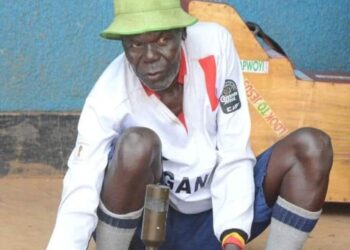Ramlah Kyomuhendo got married to her husband Badru Nsubuga in 2001. At first, the couple, which was residing in Busega, a Kampala suburb was living a happy married life.
However, Ms Kyomuhendo says her husband started mistreating her when she gave birth to a second baby girl yet he was expecting a boy.
For not producing a baby boy, she started getting insults and abuses both mentally and physically from Mr Nsubuga, who Ms Kyomuhendo alleges threatened to kill her.
“For fear of my life, I decided to separate from my husband in 2015 because I couldn’t sustain any more domestic violence,” she says.
Like Ms Kyomuhendo, many women worldwide are victims of domestic violence and have separated from their husbands while others have been tortured and killed.
Violence against women and girls is one of the most widespread, persistent and devastating human rights violations in our world today
The United Nations Convention on the Elimination of All Forms of Discrimination against Women, defines Gender Based Violence (GBV) as any act of gender-based violence that results in or is likely to result in physical, sexual or psychological harm or suffering to women, including threats of such acts, coercion or arbitrary deprivations of liberty, whether occurring in public or in private life.
This treaty spells out that GBV is a human rights violation with gross consequences for men, women, children, communities and the nation.
According to the latest findings from the National Gender Based Violence Data Base (2013) to date, at least 23,761 women in the country have been victims of GBV as reported in the system at the Ministry of Gender, Labour and Social Development.
Among all forms of violence, physical assault is ranked highest with about 4,847 female victims recorded since November 2013.
The Uganda Demographic and Health Survey 2011, states that 56 per cent of women experience physical violence.
About six in 10 women have ever experienced physical violence since the age of 15 years. And 27 per cent of women experience sexual violence (first sexual act is forced for 19 per cent of women).Women are four times more likely to be victims than men.
This study notes that 95 per cent of Ugandan girls are sexually abused during their childhood. Uganda is placed sixteenth among 25 countries with 16 per cent of girls married off by the time they are 15 years and 53 per cent by the age of 18.
Furthermore, the average age at dropout for girls is 13, indicating that girls’ dropout at the time they are supposed to be completing primary school.
Uganda has a very low primary survival rate of 33 per cent, survival rate being the number of children starting together in Primary One, progressing through the cycle Kenya is 84 per cent, in Tanzania 78 per cent and in Rwanda 81 per cent.
In 2011, Centre for Domestic Violence Prevention and the Economic Policy Research Center of Makerere University undertook an economic cost study of domestic violence in Uganda.
They established that individuals spend Shs21.9b as out of pocket expenditure to seek services from duty bearers and in terms of lost time at work after experiencing violence.
These organisations further found that service providers (police, health centers, courts, shelters) spend an estimated Shs 56b annually dealing with domestic violence cases.
While healthcare providers spend Shs18.3b annually, police costs are Shs19.5b and local councils amount to Shs12.7b.
In this case, physical violence with injuries accounts for one third the total costs by service providers and this is followed by physical violence with no injuries (26 percent).
According to the United Nations website, violence against women is the most extreme form of discrimination.
The UN Secretary General António Guterres in his report on the progress towards the Sustainable Development Goals, says on the basis of data from 2005 to 2016, for 87 countries, 19 per cent of women between 15 and 49 years of age said they had experienced physical and/or sexual violence by an intimate partner in the 12 months prior to the survey.
In the most extreme cases, such violence can lead to death. In 2012, almost half of all women who were victims of intentional homicide worldwide were killed by an intimate partner or family member, compared to 6 per cent of male victims.
Another extreme case of violence against women is female genital mutilation/cutting.
This harmful practice has declined by 24 per cent since around 2000.
Nevertheless, prevalence remains high in some of the 30 countries with representative data.
In those countries, survey data from around 2015 indicate that more than one in three girls between 15 and 19 years of age have undergone the procedure compared to nearly one in two girls around 2000.
Do you have a story in your community or an opinion to share with us: Email us at editorial@watchdoguganda.com











